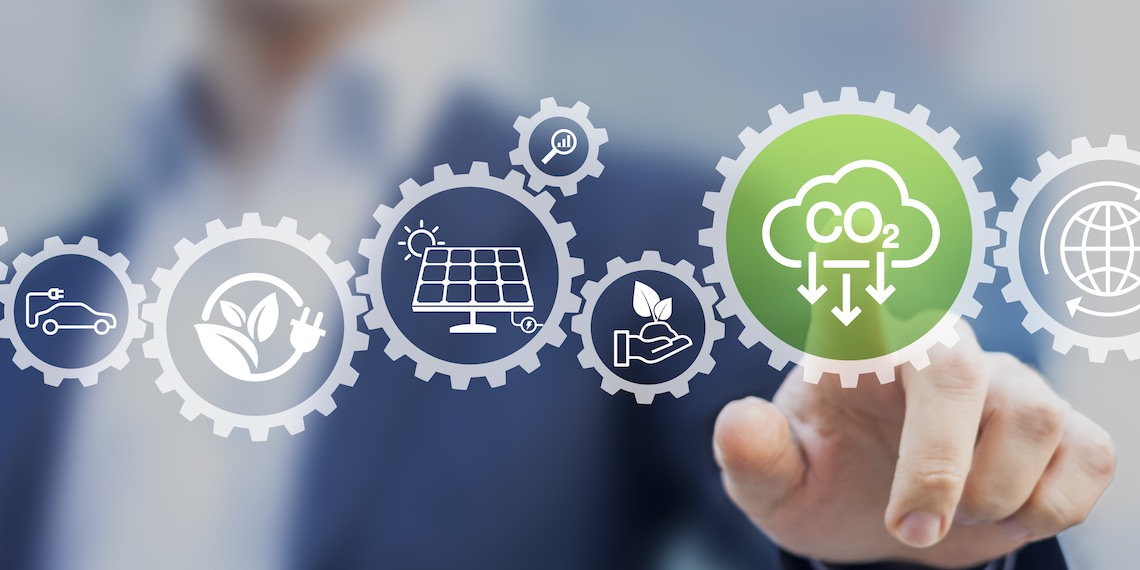Committing to net zero: Urban Utilities’ plan to quit carbon

Urban Utilities has committed to achieving net-zero carbon emissions by the time Brisbane hosts the 2032 Olympic and Paralympic Games. And, with just 10 years to reach its target, the utility has developed a robust roadmap on how it will kick carbon for good.
Urban Utilities Integrated Solutions Executive Leader Chris Bulloch said that while the commitment is ambitious, achieving net-zero by 2032 is an essential part of ensuring a healthy, liveable and sustainable future for the communities the utility serves.
As part of its commitment, the utility plans to further improve energy efficiency, increase its renewable energy use to 100%, work alongside industry to reduce carbon, and invest in local offset projects that deliver more than just carbon sequestration.
“Climate change is the defining issue of our time and we’ve developed a clear plan to ensure a sustainable future for both our people and our planet,” Bulloch said.
Moving towards 100%
Urban Utilities Principal Utilities Strategist Glen Taylor said the utility already has a strong track record in reducing its carbon footprint, and is now set up well to achieve 100% renewable energy use by 2032.
“We’re been embracing cost-effective renewable power by generating our own clean energy from wastewater and by installing solar panels in key regional plants,” he said.
“Since we were formed in 2010, we’ve doubled the amount of clean power we’re producing each year from wastewater, and we will increase our use of renewable energy to 100% by 2032.
“We’ve also recently introduced the Australian-first Anammox biological treatment process at Brisbane’s largest wastewater treatment plant, which has reduced our energy use, too.”
Taylor said these achievements are a result of the utility’s dedication to efficiency, which will play a big role in reaching net zero by 2032.
“We’ve become very good at being efficient with what we’ve got, and doing the most we can to deliver. This has been a really important part of our journey,” he said.
“One of the big challenges is addressing the nexus between population growth and carbon emissions. As our communities grow, our footprint grows every year, too.
“Urban Utilities takes a lot of pride in breaking that nexus. Since we formed, we have grown by 20%, but have actually reduced our emissions by 15% in the same amount of time. Breaking that curve is the hard part, but we have managed to do it and it’s locked in.
“The exciting thing about the journey to 100% for me is that it's eminently doable, but it's how we shape implementation that’s really interesting.”
Moving down the chain
Another part of achieving net-zero that needs to be addressed is the supply chain — ensuring that all goods and services used are carbon-free too — and Bulloch said the utility will continue to work with industry to develop sustainable solutions.
“We will be working closely with the rest of the industry, in terms of how they can contribute to our goal, as well. And so far everyone is really committed,” he said.
“It’s great to see collaboration happening across the whole industry, and the fact that we are all working towards the same outcomes and goals. We’ve had good engagement with our supply chain in terms of opportunities and ideas for how we work together under our goal.
"Looking forward into the next generation of our engagement approach, we have some quite good leverage in terms of how we can set out what’s important to us. While there are challenges, we’re optimistic about overcoming them because there is a willingness to follow.”
Taylor said working with supply chains and partners successfully will be about making sure everyone is on the same page, but the 2032 commitment sends a clear message about how Urban Utilities intends to do business.
“We’ve made this commitment, it’s important to us, and we need it to be important to our partners, too. Our commitment has really provided a signal. We are serious about it and it needs to be part of the conversations we have with everybody we work with,” he said.
Delivering more from offsets
In order to meet net-zero by 2032, Urban Utilities will also need to execute a plan to account for any remaining carbon balance via offsetting programs, but Bulloch said the utility is pursuing offsetting options that achieve multiple benefits for the environment and the community.
“We know that some of our fugitive emissions will be an area of target, and we will be pursuing offsets locally. And by working outside what would ordinarily be our traditional boundaries, there are a significant amount of opportunities for us,” he said.
“We have found that there are lots of willing partners out there interested in co-investing with us in order to pursue some really incredible work.”
So far, Urban Utilities has embarked on its offsetting journey with plans to rehabilitate up to 5000 hectares of land in its service region, Taylor said.
“We’ve already seen great success in reforestation, following our establishment of a dedicated koala habitat in Helidon in the Lockyer Valley to support native wildlife,” he said.
“Our forest of 1600 blue gums is sustainably irrigated with recycled water from the nearby Helidon wastewater treatment plant. This will lead to us looking for further opportunities at a larger scale.”
Taylor said working with the local community to understand the opportunities available to achieve multiple benefits is important work.
“At Helidon, we are using treated wastewater to irrigate the trees we’ve planted. But this effort is not just a carbon capture solution, or a wastewater reuse solution. It’s also a koala solution,” he said.
“By creating the Helidon forest beside an existent koala colony, we are adding to the habitat of an endangered species. It’s really important that our offsets are producing multiple benefits — it’s what the community wants and expects from us.”
Taylor said it’s crucial to start exploring offsetting options now to ensure the utility is prepared to effectively mitigate any remaining carbon by 2032.
“Offsetting is really the last point in the journey. We must first ensure we are doing everything we can to eliminate emissions. But offsetting is still important as it helps us mitigate the emissions that are very difficult to remove completely,” he said.
“The work is starting now. We have a very good idea of how much carbon we will need to be offsetting by 2032. We have goals to tick off along the way, but we need to make sure we are moving on these offsetting solutions ahead of time to ensure they’re effective.”
And while the utility still has a lot to do in the next decade, Bulloch said the enthusiastic response to the 2032 net-zero goal has him convinced the utility will be successful.
“I’m overwhelmed by how committed our industry has become to achieving a more sustainable outcome for our communities. It’s so great to see such positive energy from the whole industry, with everyone working together to solve these very big problems,” he said.
“I’m confident with how we are going, our teams are already making strides.
“The minute we made the announcement, our whole business became very excited about achieving it. And when you have a business of 1500 people, and a supply chain of 1000 people, all very focused on reaching the same outcome, it’s very powerful. I expect we will achieve quite a lot.”


